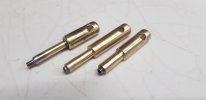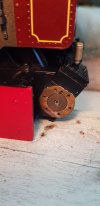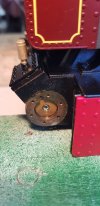I have 3 Accucraft locos, 2 are quite a few years old now apparently, they were second hand and could be 20 years +. They're fine, a bit difficult to lightI had been warned about Accucraft locos - my Roundhouse Davenport has been a delight by comparison!
though, in fact sometimes bloody difficult! I recently bought a brand new Roundhouse, which is a dream to light, but doesn't seem to be as robust as the Accucrafts. Horses for courses I have to say!
Glad to hear the oil problem has been resolved.



